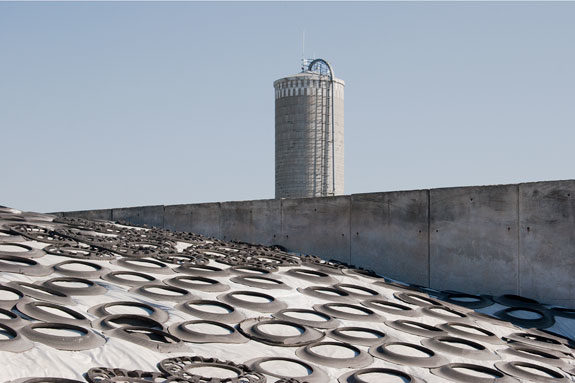What is silo gas?
Shortly after green plant material is ensiled, it begins to ferment. Oxygen used in fermentation combines with nitrates in the plants and nitric oxide gas is released. This combines with oxygen in the air to form nitrogen dioxide (NO2).
\Silo gas forms within a few hours up to three weeks after fresh plant material is added to the silo. It is a problem in conventional, non-airtight silos. However, silo gas will be formed in silage bags and covered horizontal bunker or pile silos.When does silo gas start to form?
Be careful when opening up bags, or bunker and pile silo covers as gas may be trapped within them. If someone goes out to repair the plastic covering on bunker or silo piles within the first three weeks, caution should also be taken to reduce potential exposures from trapped gas under the plastic.
If a bunker or pile silo is not immediately covered, the NO2 may settle out around these silos. Serious lung damage may occur from a slight exposure.
How will exposure to silo gas make me sick?
Silo-filler’s disease is the term given the injury resulting from exposure to silo gas. Inhaling even a small amount can result in serious, permanent or fatal lung injury. The nitrogen dioxide combines with water in your lungs to form highly corrosive nitric acid.
High concentrations of NO2 may make a person helpless in 2 to 3 minutes.
Symptoms of silo-filler’s disease include: coughing, burning, shortness of breath, chills, fever, headaches, nausea or vomiting.
While a person may not immediately experience the symptoms from a mild exposure, in three to 30 hours there is a slow, progressive inflammation of the lungs that results in fluid buildup in the lungs. This can be fatal.
An unique characteristic of this disease is that there may be a relapse in two to six week after the original episode, which may be milder or more severe than the first episode.
What can I do to prevent silo-filler’s disease?
For upright silos:
1. Stay out of an upright silo for at least three weeks after filling.
2. Be alert for bleach-like odors and/or yellowish brown gases in or near silos.
3. If you must enter the silo, e.g., to set up a silo unloader, do so immediately after the last load is in. Do not wait several hours or overnight. If you need to wait until the next day, save the last load to add before entering.
Run the blower at least 15 to 20 minutes before entering and keep it running while inside. Keep a door open down to the silage surface and have someone keep in contact with you from the outside.
4. Ventilate the silo room adequately for three weeks after filling, keeping windows and doors open.
5. Keep the door between the silo room and the barn closed to prevent silo gas from killing livestock.
6. If you experience throat irritation or coughing in the silo, get fresh air immediately.
For bunker and pile silos and silage bags:
1. Cover immediately when done harvesting.
2. Observe for any signs of gas when repairing plastic or working around the area.
3. Do not puncture bubbles in plastic that may release the gas directly into an individual's face.
4. Use caution when opening the plastic during the first three weeks after covering or sealing the bag.
See your doctor immediately after exposure to silo gas. Remember, this can be fatal. FG
—University of Wisconsin–Madison Wisconsin Crop Manager newsletter
PHOTO
TOP: Staff photo.









